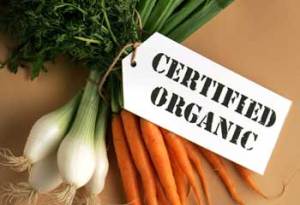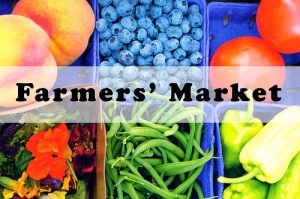For a growing number of new mothers, there’s no better nutritional snack after childbirth than the fruit of their own labor.
By Atossa Araxia Abrahamian
Published Aug 21, 2011
 |
|
A fresh placenta simmers with ginger, lemon, and a jalapeño pepper.
(Photo: Kathryn Parker Almanas )
|
Jennifer Hughes’s placenta was delivered ten minutes after her first child, just before midnight on March 31. It was on the large side, with a liverish texture and a bluish tinge; it measured nine inches in diameter and weighed a pound and a half. Placentas are considered biohazardous waste by the medical Establishment and are usually disposed of accordingly. Some hospitals send the afterbirth in formaldehyde to a pathology lab for analysis before it is carted off by a tissue-disposal service; others toss it out with bloody miscellany in special containers.
But in the birth plan that Hughes brought with her to Beth Israel Medical Center, she specified that she wanted to keep her placenta, for cultural reasons. Complying with New York State health regulations, which says that hospitals “may, at the request of a patient or patient’s representative, return a healthy placenta for disposition by the patient,” the hospital allowed her to take it home, and even packed it up for her.
In some cultures, it is customary to bury the placenta and plant a tree over it.
Hughes had other plans. She was going to eat it.
Early the next morning, a 28-year-old woman named Jennifer Mayer is driving a Subaru from Manhattan over the Brooklyn Bridge with an opaque takeout container in the passenger seat. Inside the container is a gallon-size Ziploc bag, and inside the bag is Jennifer Hughes’s placenta.
Mayer—an upbeat, blue-eyed blonde from upstate New York—is a professional placenta-preparer. Her job is to transform placentas into supplements that are said to alleviate postpartum depression, aid in breastmilk production and lactation, act as a uterine tonic, and replenish nutrients lost during pregnancy. Her clients are mostly middle-class, like Hughes and her husband, Doug, who are college-educated, in their thirties, and live on a gentrifying street in Crown Heights. On this dreary April morning, Mayer is driving the afterbirth to their apartment to begin preparing it.
“It’s the freshest placenta I’ve ever worked with!” she says, glancing over at the container as the car lurches through traffic. Mayer speaks about the organ in tones most women reserve for newborns: “perfect,” “beautiful,” “precious.”
Her enthusiasm isn’t unfounded. The placenta feeds the baby until birth, filtering toxins while letting in vitamins, minerals, oxygen, and other nutrients from the mother’s bloodstream. It even helps reduce the risk of transmitting viruses, including HIV, from mother to child.
Mayer, who also works as a massage therapist and doula, first became interested in placentas as a student at the University of Colorado. After reading up on the purported benefits of consuming one’s afterbirth and learning that a client was planning to try it, Mayer decided that she wanted to offer her customers placenta capsules: dried, ground afterbirth packaged into a clear pill no bigger than a regular vitamin supplement.
The technique, called encapsulation, was not widely practiced in Colorado and, until quite recently, was practically unknown on the East Coast. But Mayer found a doula who conducted training sessions with donated placentas, and started her business, Brooklyn Placenta Services, shortly thereafter.
“They’re happy pills,” Mayer says. “They’re made by your body, for your body. Why wouldn’t you want to try?”
In 1930, the researchers Otto Tinklepaugh and Carl Hartman described a female macaque monkey eating her placenta. “After licking the afterbirth, she begins the grueling task … of consuming this tough fibrous mass,” they wrote. “Holding the organ in her hands, she bites and tears at it with her teeth.” Tinklepaugh and Hartman could not determine the precise reason why macaques—and virtually every other land mammal—eat their own placenta. To this day, the reasons remain unclear.
Mark Kristal, a behavioral neuroscientist at the University of Buffalo, is the country’s leading (and quite possibly only) authority on placentophagia, the practice of placenta consumption. He has been researching the phenomenon for twenty years, and concludes that it must offer “a fundamental biological advantage” to all mammals. What this advantage is, he writes in one of his papers, “is still a mystery … in fact, a double mystery. We are not sure either of the immediate causes … nor are we sure of the consequences of the behavior.” But placentas have carried a special spiritual significance in some cultures. In ancient Egypt, it had its own hieroglyph, and the Ibo tribe in Nigeria and Ghana treats the placenta like a child’s dead twin. In traditional Chinese medicine, small doses of human placenta are sometimes dried, mixed with herbs, and ingested to alleviate, among other things, impotence and lactation conditions. And in modern medicine, doctors often bank umbilical-cord blood to treat genetic diseases with harvested stem cells.
According to Kristal, the first recorded placentophagia movement in America began in the seventies, when people residing in communes would cook up a placenta stew and share it among themselves. “It’s a New Age phenomenon,” he explains. “Every ten or twenty years people say, ‘We should do this because it’s natural and animals do it.’ But it’s not based on science. It’s a fad.”
…
Continue reading here



